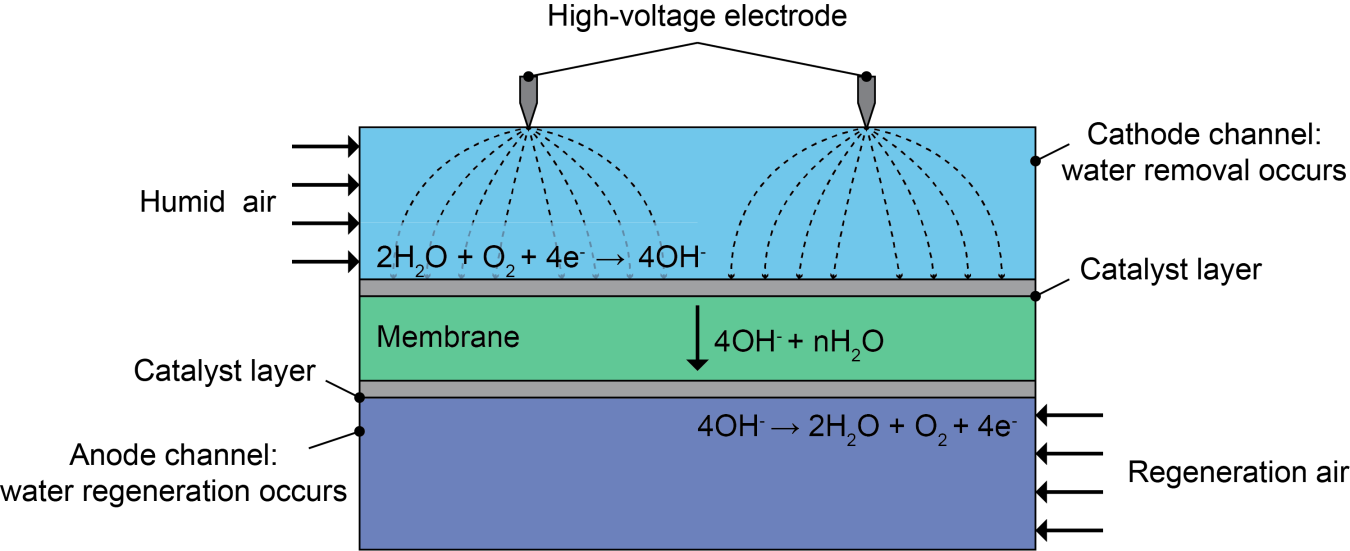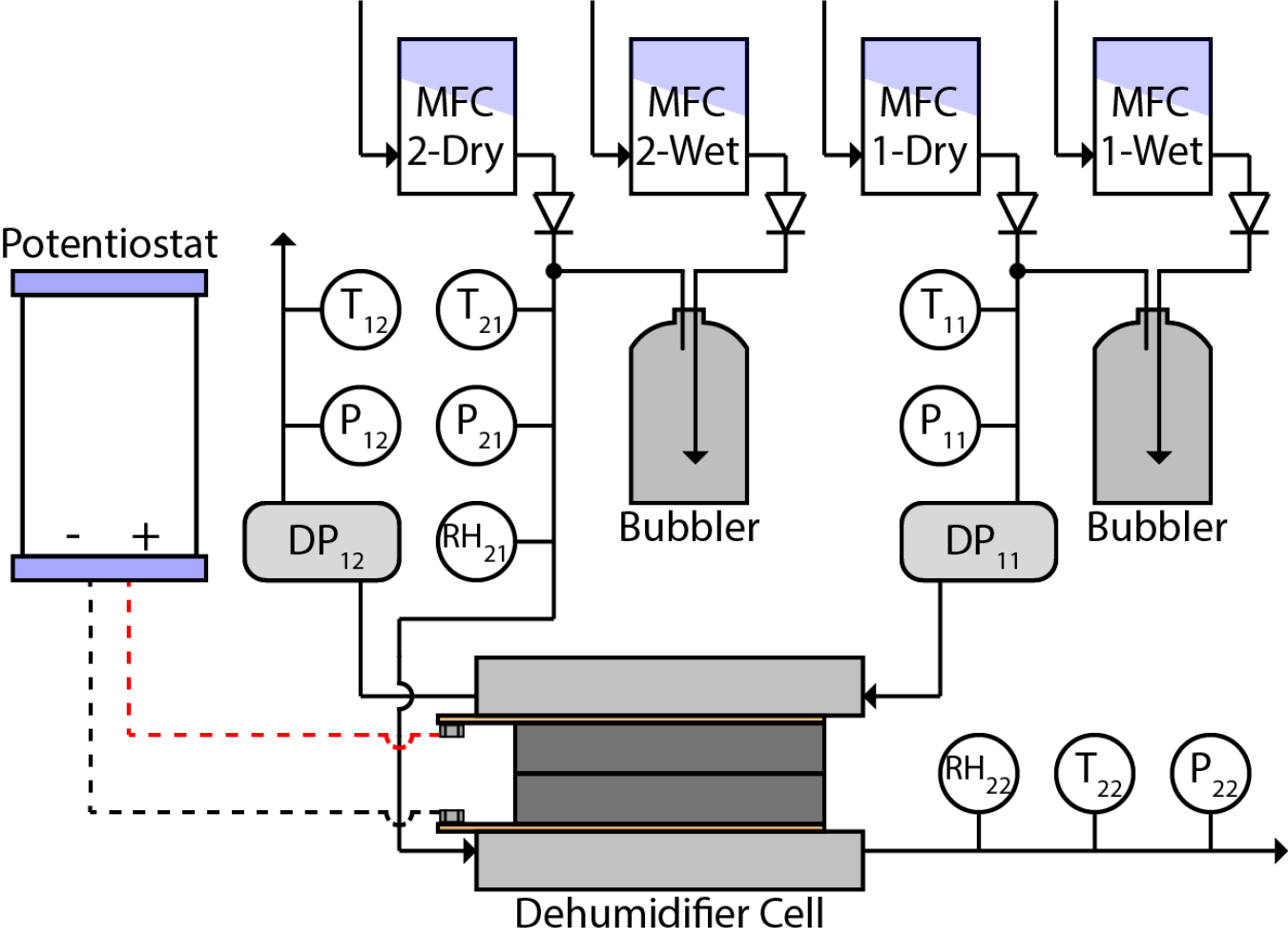Lead Performer: University of Maryland – College Park, MD; partner: Daikin U.S. – Santa Clara, CA
May 21, 2020Lead Performer: University of Maryland – College Park, MD
Partner: Daikin U.S. – Santa Clara, CA
DOE Total Funding: $1 million
Cost Share: $250,000
Project Term: June 1, 2019 – May 31, 2021
Funding Type: Building Energy Efficiency Frontiers and Innovation Technologies (BENEFIT) - 2018
Project Objective
The project aims to design, develop, fabricate, evaluate, and optimize an advanced separate sensible and latent cooling (SSLC) air-conditioning (AC) system with an electrohydrodynamic (EHD)-enabled electrochemical dehumidification (ECD) system, resulting in a coefficient of performance (COP) improvement of 28% compared with a conventional AC system. The first goal is the development of novel EHD-enabled ECD system for efficient latent cooling. Second is the implementation of the sensible cooling VCS to provide the target sensible capacity at an elevated evaporating temperature. Third is the development of controls to meet various sensible and latent cooling loads and optimization of all components. The ultimate goal is the concept validation through a laboratory prototype fabrication and experimental evaluations under a range of operating conditions.
To achieve the goal, we aim to develop the design of the EHD-enabled electrochemical dehumidification system and sensible evaporator vapor compression system (VCS) with an industry partner. Appropriate control strategies will be developed to match VCS sensible and latent cooling capacities to sensible and latent cooling loads (with assistance from an industry partner). A laboratory prototype will be built for each subsystem and tested first and the SSLC system will be constructed using subsystems built and tested under a range of operating conditions to determine its energy efficiency. Moreover, the challenges associated with the commercialization of the proposed system will be reviewed and addressed from the initial component and system design stage to the final test data analysis stage, through industry partner involvement at various stages of milestone progress review of the project.

Project Impact
Most of the current AC units operate on conventional vapor compression cycle (VCC) and are approaching their efficiency limits. A novel electrochemical dehumidification (ECD) technology can improve the efficiency of the VCC by operating it for sensible cooling only. The concept will reduce total power consumption by 22% while delivering the same capacity. It is suitable for both in residential and commercial ACs in all climate zones. The estimated primary energy savings of proposed concept being 836 TBtu. The concept will not only make the U.S. the leader in innovative AC technologies but will also create new jobs.
Contacts
DOE Technology Manager: Antonio Bouza
Lead Performer: Yunho Hwang, University of Maryland, College Park
Related Publications


